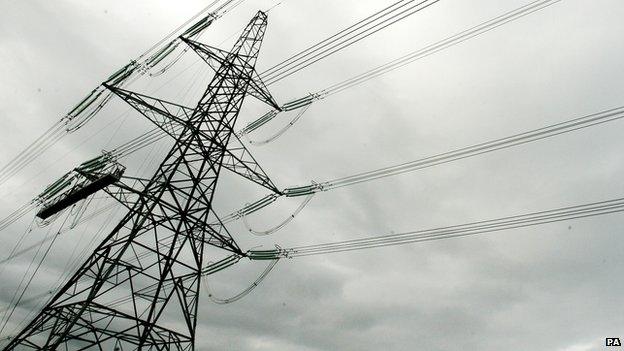Q&A: 'Crucial' cable for Western Isles green energy
- Published

The Western Isles interconnector would allow for electricity to be distributed to customers on the mainland
Scottish ministers have cleared plans for a major wave farm off the Western Isles. However, the project could face delays as it is dependent on the laying of what is known as the interconnector.
What is the interconnector?
It is a subsea power cable stretching to about 50 miles (80km) from Gravir on Lewis to Ullapool on the north-west coast of mainland Scotland.
Why is it needed?
Renewable energy projects planned for the Western Isles are expected to generate far more electricity than the needs of about 13,200 properties on the isles, so it would be "exported" via the cable to the mainland for distribution. As well as the wave farm off the north-west coast of Lewis, large onshore wind farms have been proposed for the isles.
Who is behind the project?
Scottish Hydro-Electric Transmission Ltd (Shetl), a division of energy giant SSE.
Shetl owns a 3,106-mile (5,000km) high voltage electricity network of underground cables and overhead lines that serves about 70% of the land mass of Scotland, and also connects to the rest of Great Britain.
The company is responsible for maintaining and investing in this transmission network. The operation of the transmission system, however, is the responsibility of National Grid Electricity Transmission.
When will the cable be ready?
This has been the subject of controversy.
There have been discussions about subsea cables linking islands energy projects with the UK mainland since 2001.
Western Isles Council - Comhairle nan Eilean Siar - had hoped Shetl would have had the interconnector in place this year. But the project has been dogged by delays and increases in estimated costs.
In a chicken and egg-like situation, Shetl has said construction work could not start unless the cost was underwritten by large companies planning renewable projects on the isles.
However, the projects face uncertainty because of high electricity transmission charges.
In 2010, Shetl said it had missed the deadline for ordering the cable to have it operational by an October 2013 target date.
Since then further delays have emerged. There were hopes to start work in 2015, but this was pushed back to 12 months or longer and the cost of the cable also rose by 75% to about £700m.
What next for the interconnector?
Talks are ongoing between SSE, the Scottish government, developers, National Grid and Ofgem.
Last week, SSE said it would not be able to commission work on the cable before 2017.
The comhairle is furious at this situation and has called for the project to be taken off Shetl's hands and progressed by another organisation as a matter of urgency.
- Published22 May 2013
- Published17 May 2013
- Published15 May 2013
- Published2 May 2013
- Published18 January 2013
- Published17 January 2013
- Published5 November 2012
- Published2 August 2011